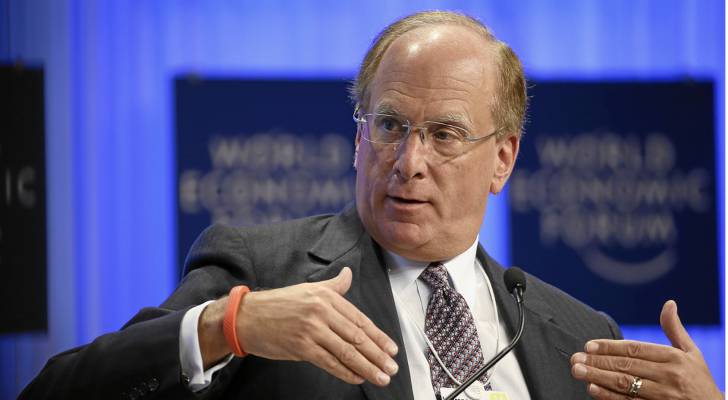
Just when people are more worried than ever about their investments, even to the point of cashing them out, BlackRock Inc. CEO Larry Fink says it’s time to go all in.
But he has a specific investment in mind: private equity, also known as alternative investments.
Don’t miss
- I’m 49 years old and have nothing saved for retirement — what should I do? Don’t panic. Here are 5 of the easiest ways you can catch up (and fast)
- Gain potential quarterly income through this $1B private real estate fund — even if you’re not a millionaire. Here’s how to get started with as little as $10
- Car insurance premiums could spike 8% by the end of 2025 — thanks to tariffs on car imports and auto parts from Canada and Mexico. But here’s how 2 minutes can save you hundreds of dollars right now
BlackRock (BLK) has long been known for its low-cost stock index funds, or ETFs, but Fink sees a big future in higher-fee private assets that aren’t listed on the stock markets.
“The solution isn’t to abandon markets,” he wrote in his annual letter to investors.
“It’s to expand them, to finish the market democratization that began 400 years ago and let more people own a meaningful stake in the growth happening around them.”
Fink has overseen BlackRock’s rise to the world’s largest money management firm with more than $10 trillion in assets. He also serves on the board of the World Economic Forum, and believes opening up private-equity markets will help reduce the gap between rich and poor..
More asset management firms offering private equity
Fink notes that up until recently, only wealthy people could invest in infrastructure projects like data centers, ports and power grids — let alone real estate or private credit. That’s because they aren’t publicly traded on stock exchanges. That’s where private equity comes in.
His firm is among a growing number of asset management companies — including Blackstone (BX), Apollo (APO) and KKR (KKR) — offering regular investors access to private equity,
Read more: Want an extra $1,300,000 when you retire? Dave Ramsey says this 7-step plan ‘works every single time’ to kill debt, get rich in America — and that ‘anyone’ can do it
To take the lead, last year, BlackRock acquired Global Infrastructure Partners for $12.5 billion and data firm Prequin for $3.3 billion. The firm is also wrapping up a $12-billion deal for private credit company HPS Investment Partners.
Together, these investments will help BlackRock manage $600 billion in alternative assets.
What do these developments mean for your portfolio?
Weighing benefits and risks of private equity in your portfolio
Fink suggested that the traditional 60/40 portfolio of stocks and bonds may no longer be enough to diversify effectively. Going forward, he sees a new standard: 50% in stocks, 30% in bonds, and 20% in private assets like real estate, private credit, and infrastructure.
To help retail investors tap into these markets, BlackRock has started rolling out model portfolios that include private equity and credit funds alongside traditional assets like stocks and bonds.
These portfolios, which average 15% exposure to private assets, are now available to U.S. investors.
While these new investment opportunities are exciting, it’s important to stay mindful of the risks.
Private assets can come with higher fees, less liquidity, and more complexity compared to traditional investments. That means you might not be able to access your money quickly, so consider your financial goals before diving in.
To keep up with changes in private-market investments and diversification, check out trusted government and financial resources on the subject.
The Securities and Exchange Commission (SEC) offers valuable insights on investment products, risk management, and market regulations.
For retirement planning, the U.S. Department of Labor provides guidance on 401(k) diversification. FINRA (Financial Industry Regulatory Authority) offers educational tools to help you understand risk and diversify your portfolio effectively.
Before you make any moves, it’s always a good idea to chat with a financial advisor who can help you figure out whether private-equity investment fits with your risk tolerance and long-term goals.
What to read next
- Thanks to Jeff Bezos, you can now become a landlord for as little as $100 — and no, you don’t have to deal with tenants or fix freezers. Here’s how
- Here are 3 ‘must have’ items that Americans (almost) always overpay for — and very quickly regret. How many are hurting you?
- Trump warns his tariffs will spark a ‘disturbance’ in America — use this 1 dead-simple move to help shockproof your retirement plans ASAP
This article provides information only and should not be construed as advice. It is provided without warranty of any kind.